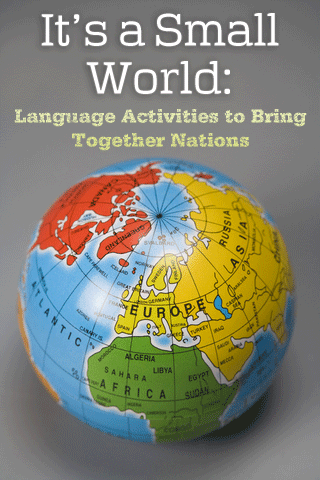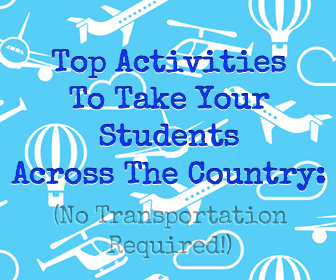Itís a Small World: Language Activities to Bring Together Nations


These activities will show you how to take your students across the country in their quest for language acquisition, no transportation required.

Make a Plan
On September 10, 1913, the Lincoln Highway, the first paved road in the U.S. that reached from one coast to another, was laid out. It took until 1927 to complete, but the highway system of the United States was born that day. After this time, travel from one city to another in the U.S. would never be the same. In the spirit of the pioneers who built that first cross-country highway, announce to your students that you will hold a cross-country race. In this race, your students will have to travel from New York to San Francisco just as that first highway did. Whichever group can make the trip in the fewest miles will win the race. Have your students work in groups to plan their trips. Your students should discuss which roads they will take, and they will have to accurately measure the mileage. (You can do this by having each team use a string to mark their trip along a highway map. Once the complete trip has been mapped, remove the string and measure it. Then use the mileage key to calculate how many miles the trip took.) They should also keep a list of the states and cities that they will pass through. You will want to make several maps available to your class during this activity, and have them complete the planned route in class. Otherwise, your groups may have identical directions that originated from Map Quest. At the end of your class period, announce the winners of the race and, if desired, award them a trophy for the shortest trip across the United States.
Take in the Sights
Now that your groups have their routes planned, have them do a little research on sights they may like to see along the way. They can choose to visit cities or national monuments, parks or recreational areas. Each group should look at the locations along their route and then choose five points of interest that they will visit. If possible, have each group collect some tourist information and visit web sites to find out more about the sights they have chosen. You may also want to have your students write a personal letter for additional information from organizations around the country, or you may want to borrow some tourist guides from the library or get some at AAA if available.
Once your group has chosen its sights and done some research, have each group give a presentation to the class about one of their tourist attractions. They should include information about the site, where it is located, and why they chose it as one of their tourist destinations. Ideally, each presentation will also include some historical information about the location and information about its popularity with tourists today.
Make It Personal
Now that your class has taken a pseudo trip across the United States and seen some sights along the way, why not open your class up for discussion? Use this time to talk about the different modes of travel a person could use when travelling across the country. Make your list as exhaustive and creative as possible, including not only plane, train and automobile but also ferry, scooter, bicycle and others. After your discussion, ask each of your students to share their personal stories about coming to the U.S. Most of them probably flew, but what other details can they give about their trips? How many hours did it take? How many locations did they stop at along the way? Did they have layovers? Did anyone have to take a train or ferry or another type of unusual transportation? What interesting sights did they see along the way? If they were to highlight four or five of those interesting sights, what would they be? You may want to write out some questions for your class and have them discuss those questions in groups of three or four. Then have each group share their most interesting answers with the class.
Now that you have talked about it, have each of your students write a narrative about his or her trip from his home country to the U.S. They should include details about their modes of transportation as well as the interesting sights they took in during their travels. If you have a world map up in your classroom, post the narratives around the map and near your students’ countries of origin. You may choose to title the board “Our Travelling Ways” or some other travel related title.
As the last piece of your students’ personal travel stories, have them measure on the world map how far each of them travelled to get to your school. Make sure each person understands how to measure mileage on the map using the key to get numbers that are more accurate. Whereas the race across the U.S. awarded a prize for the shortest trip, this time acknowledge the person who travelled the most miles to continue his or her study of English.
Not only that, they can get to know one another better as they share their own stories of travel to the U.S. So get ready, get set and go! The race is on.